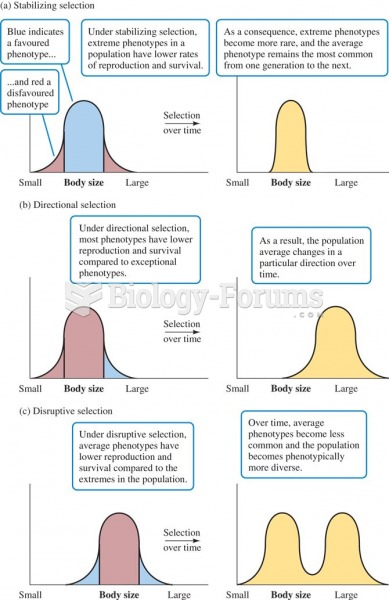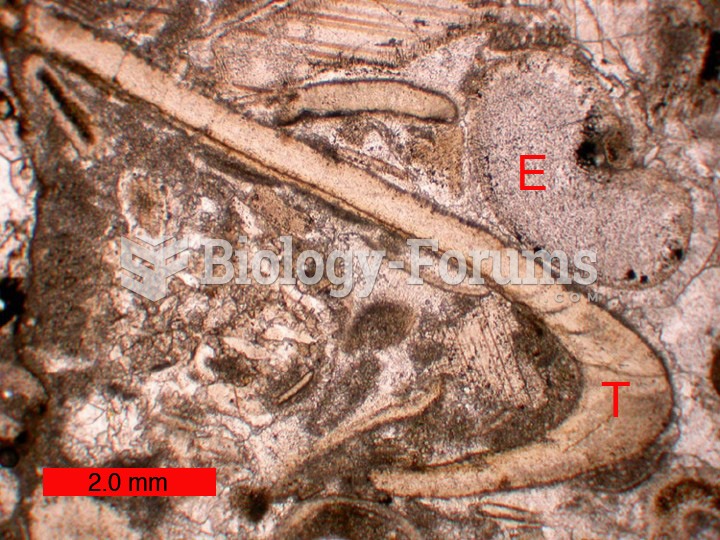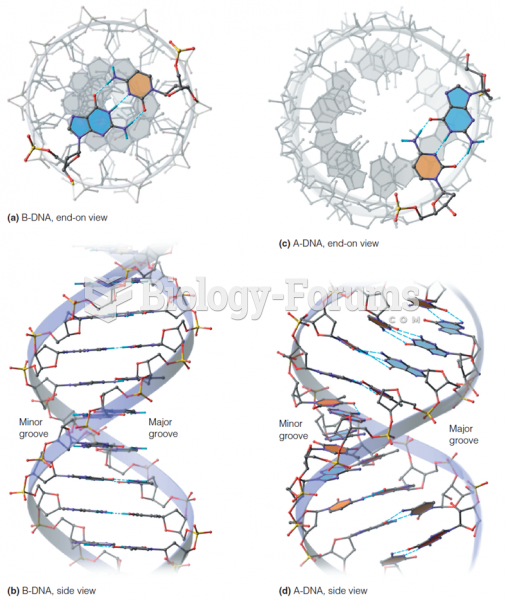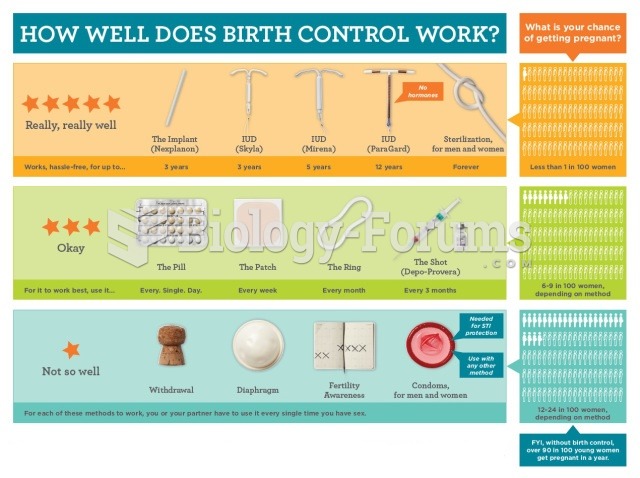|
|
|
The first oral chemotherapy drug for colon cancer was approved by FDA in 2001.
More than nineteen million Americans carry the factor V gene that causes blood clots, pulmonary embolism, and heart disease.
Russia has the highest death rate from cardiovascular disease followed by the Ukraine, Romania, Hungary, and Poland.
Hypertension is a silent killer because it is deadly and has no significant early symptoms. The danger from hypertension is the extra load on the heart, which can lead to hypertensive heart disease and kidney damage. This occurs without any major symptoms until the high blood pressure becomes extreme. Regular blood pressure checks are an important method of catching hypertension before it can kill you.
The training of an anesthesiologist typically requires four years of college, 4 years of medical school, 1 year of internship, and 3 years of residency.
 Three principle forms of natural selection: (a) stabilizing selection, (b) directional selection, an
Three principle forms of natural selection: (a) stabilizing selection, (b) directional selection, an
 Male coho salmon exhibit two alternative life history strategies. “Jackâ€ÂÂ
Male coho salmon exhibit two alternative life history strategies. “Jackâ€ÂÂ





